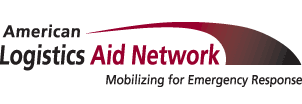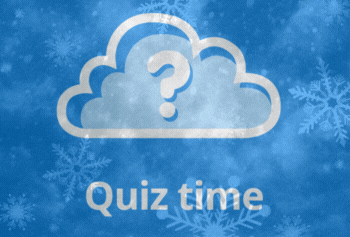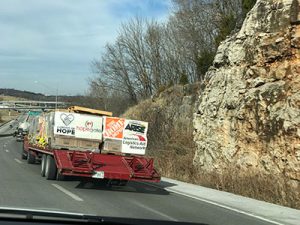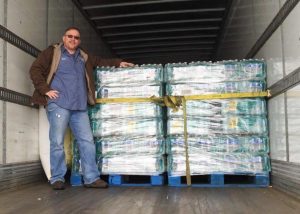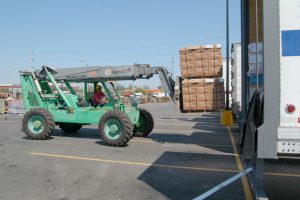Oh the weather outside is frightful, which is why it feels like the perfect time to brrrrrrrr-ing you this latest installment in ALAN’s popular “Test Your Disaster Readiness” series.
So put on your thinking caps, get your keyboards and phones ready – and let us “snow” how your winter storm preparedness measures up.
1. According to the National Oceanic and Atmospheric Administration (NOAA), the average cost of a winter storm exceeds $4 billion per event thanks in part to impacts like business interruptions, physical damage to buildings and infrastructure, and the price of relief efforts. Which region of the United States is most likely to experience these costs?
A. The Northeast
B. The Southwest
C. The Midwest
D. The Northwest
A
Not surprisingly, the greatest numbers of highly destructive winter storms occur in the U.S. Northeast. However winter storms and other forms of dangerous winter weather can and do occur in almost every region of the United States. So don’t assume that they can’t happen to you or your business just because you live someplace relatively warm. Prepare now and prepare well.
2. True or false: A winter storm is just another name for a blizzard.
False
A blizzard is one type of winter storm. However several other kinds of cold-weather events like snow storms, ice storms and freezing rain storms can also be classified as winter storms if they feature a potentially life-threatening combination of precipitation, extreme wind chill and/or sustained high wind speeds. And all of them deserve to be taken seriously.
3. Which of the following is NOT a common risk factor associated with a winter storm?
A. Exposure/hypothermia
B. Traffic accidents
C. Carbon monoxide poisoning
D. Limited access to life-saving emergency services
E. Home fires
F. Flooding
G. This is a trick question. They’re all common winter storm hazards
G
Winter storms’ potential hazards don’t just include the direct effects of wind, ice, snow and cold temperatures. They also include many of the risky behaviors that people engage in while trying to stay warm (like using outdoor generators indoors) or trying to get from point A to B (like driving when visibility is low or roads are icy). That’s why it’s especially important to refresh your knowledge of winter safety fundamentals each season. Ready.gov’s Winter Ready page is a great place to start.
4. According to FEMA’s Ready.gov site, how many days’ worth of food, water and other supplies should an emergency preparedness kit for winter storms or other disasters contain?
A. One
B. Several
C. Ten
D. An unlimited number
B
While it’s certainly smart to have several weeks’ or months’ worth of supplies on hand (especially since you can always share your surplus with folks who aren’t as prepared), Ready.gov’s most recently updated baseline for an emergency kit is several days – or longer if you live in an area that has the potential to be snowed or iced in for significant periods of time. For a full list of what types of items should go into this kit, go to that site’s Build A Kit page.
5. How much water should go into a winter storm emergency kit?
A. None. You can always eat or melt snow.
B. A gallon
C. One gallon per person, per day
D. Water?
C
Whether you’re dealing with a winter storm or other bad weather event, ensuring that you and the people you’re responsible for (including any of your employees who might have to temporarily shelter in place at your office or warehouse) have adequate hydration should always be one of your top concerns. None of us can survive for long without it, and even though it may seem like snow is a good substitute, it’s not. Eating snow can actually make you more rather than less dehydrated. Plus you’ll need to melt up to ten gallons of it to yield just one gallon of water.
6. True or False: The majority of ice- and snow-related injuries occur in automobiles.
True
According to the National Severe Storms Laboratory, 70% of snow- and ice-related injuries occur in vehicles. Many of these are related to accidents that occur as a result of people driving on roads that have become especially icy or in low-visibility conditions. So please, don’t get behind the wheel if local safety and weather experts are advising you to stay put. Your life – or someone else’s – could depend on heeding their important safety warnings.
7. True or False: ALAN has assisted – and is available to assist – with relief efforts after winter storms or other winter-weather related disasters.
True
Watch the Open Cases section of ALAN’s Disaster Micro-Site for opportunities to help us out with this year’s severe winter weather relief efforts. Better yet, feel free to make a pre-offer of your logistics assets of services by going to our In-Kind Offer page.
8. Fill in the blank: Many items that are donated to product collection drives wind up in ____ rather than winter storm survivors’ hands.
A. Landfills
B. Detroit
C. Garage sales
D. Their original location
A
Sadly, even some of the most practical items that people donate to post-winter storm (and other) product collection drives often go to waste. The reasons for this are myriad, which is why we encourage you to read Collection Driving Me Crazy for more details – and to consider making a financial donation to help with winter storm relief efforts instead.
9. Logistics expenses account for as much as what percentage of post-disaster relief costs?
A. 10
B. 20
C. 40
D. 80
D
Many factors make post-disaster logistics extremely expensive (accounting for up to 80% of all disaster relief spending) and difficult to execute, including damaged roadways, icy or flooded conditions and sudden surges in demand. These hurdles often prevent disaster relief organizations from being able to use their logistics budgets as effectively as possible. And that, in turn, means that up to 40% of these well-intended efforts go to waste. It’s one reason why donated logistics space and services like the ones ALAN provides are so valuable – and why we’re so grateful for generous financial and in-kind donors like you.
10. Which of the following offers free resources for monitoring winter storms or their supply chain impacts?
A. The National Oceanic And Atmospheric Administration (NOAA) and NOAA Severe Storms Laboratory
B. Your local National Weather Service forecast
C. Weather alerts from the FEMA app
D. ALAN’s Supply Chain Intelligence Center
E. All of the above
E
If you or your business locations are located anywhere near a winter storm’s path, the NOAA and your local National Weather Service forecast are great resources for storm predictions, advisories and updates, while the NOAA Severe Storms Laboratory features a range of good resources for preparing for and preventing injuries that might result from winter storms. Additionally, the FEMA app allows you to sign up for weather alerts for as many as five locations nationwide, while ALAN’s Supply Chain Intelligence Center offers detailed real-time updates about winter storms’ effects on roadways, ports, and airports. Make plans to use one or more of them this winter season, and let us know what else we can do to help you and your company become more disaster-ready. Donate - American Logistics Aid Network (alanaid.org)
How did you score? Was it harder than anticipated? If you have any questions, reach out to us today. Our team would be happy to pass along additional winter storm safety and preparedness information.
Thanks for playing – and stay safe this winter!
